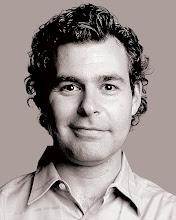"It’s harder to know what sort of philosophical underpinning Libeskind has in mind when he’s dealing with a luxury condominium or a Las Vegas shopping mall. “I don’t look at an apartment building and think, How can I subvert it?” Libeskind says. “With a shopping center, I can’t touch the machinery of shopping, but I do want to make it more successful.” His demonstrated ability to steer crowds through an awesome interior landscape can of course be very useful when the subject is shopping rather than the history of German Jews. But meaning is something else."
You know, because there must be MEANING to a mall. But I digress, because the actual interesting stuff buried in this hifalutin blather is that it seems there's been some design problems with the project. Read on:
 Next up is Las Vegas, a retail center with public spaces that is the centerpiece of MGM Mirage CityCenter, a huge new development on the Strip involving half a dozen architectural teams. Swickerath has just come back from Nevada with photos of a full-scale mock-up of the entrance canopy, a scaly metal skin like a dragon’s hide. The diagonally pitched titanium panels aren’t behaving as they had on paper. Seams aren’t aligning properly, and one side has developed an unsightly crimp.
Next up is Las Vegas, a retail center with public spaces that is the centerpiece of MGM Mirage CityCenter, a huge new development on the Strip involving half a dozen architectural teams. Swickerath has just come back from Nevada with photos of a full-scale mock-up of the entrance canopy, a scaly metal skin like a dragon’s hide. The diagonally pitched titanium panels aren’t behaving as they had on paper. Seams aren’t aligning properly, and one side has developed an unsightly crimp. “Instead of trying to get them to build something they can’t build, let’s make a design change,” Swickerath suggests. Libeskind is willing to change the angle of the panels, but he wonders how visible the problem will be from 100 feet below. “This is a handmade object, like a woven basket. I’d almost be willing to accept it the way it is.”
“Don’t,” says Swickerath. “I won’t let you.”
In the late seventies and early eighties, Libeskind taught at the bucolic architecture school at Cranbrook Academy, in Bloomfield Hills, Michigan. There, he took his graduate students into the woods, gave them a hammer and some wood, and instructed them to build something wonderful with their hands. “We were trying to get away from just theoretical drawings and retrieve a sense of the wonder of construction using medieval methods, using simple means to get very complex results,” he says. “That was in another lifetime.”
When I press Libeskind on how he can reconcile the idealism of the Cranbrook days with the task of building a luxury Las Vegas mall, he says that the restrictions have changed, but the goal is still the same: to give a world of simulacra something original and real. Just down the street from his site is the Venetian, where visitors can cross fake canals to pseudo-piazzas beneath programmable sunset skies. Libeskind describes his own contribution as a “rich, urbane, cosmopolitan scheme, one you could find in New York or in Paris.” Rather than sit far back from the street in the manner of other local pleasure domes, such as the Bellagio, this mall hugs the sidewalk the way buildings do in Manhattan. His gallery is high and topped with glass, letting in natural light, which casino developers generally treat as if it were a poisonous substance.
To Libeskind, the project signals Las Vegas’s evolution from a desert encampment of vice into a modern metropolis. The old Vegas of gaudy billboards and cinder-block shacks was “just the beginning,” he says. “That’s how Rome looked when it was just a few settlers: a wall, some signs, and a couple of brothels.”
Whether Libeskind can help coax Las Vegas, or any city, into another Rome will depend in part on how many projects he takes on. An architect who wants to leave his mark needs developers just as much as they need him."What a shame that, as profound as Libeskind wishes to be, the Forum Shops at Caesars already did an expansion that "hugs" the sidewalk of the Strip. But this insight did intrigue me and I wonder how they'll be fixing this problem.
Read the whole thing, if you must, here.








1 comments:
Doesn't sound like that much of a problem. In big projects it happens a lot that original designs and materials need to change because what works on paper doesn't necessarily work in reality. As I recall Frank Lloyd Wright's "Falling Water" has had to be reinforced several times as an example. Great design doesn't always mean great engineering.
Post a Comment